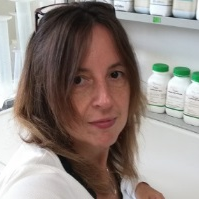Anti-microbial Activity of Metabolites Isolated from Fungi
A special issue of Antibiotics (ISSN 2079-6382). This special issue belongs to the section "Fungi and Their Metabolites".
Deadline for manuscript submissions: 20 October 2024 | Viewed by 5179
Special Issue Editors
Interests: natural products; fungi; plants; NMR; chiroptical properties; total synthesis; anti-insect activity; anti-bacterial activity
Interests: soil microbial ecology; rhizosphere; plant–microbe interactions; PGPB
Special Issues, Collections and Topics in MDPI journals
Interests: soil microbiome; gut microbiome; metaproteome; holobiont
Special Issues, Collections and Topics in MDPI journals
Special Issue Information
Dear Colleagues,
Fungi are a noteworthy source of bioactive metabolites, but differently from plants, their metabolite contents have been much less investigated to this purpose. Several new molecules have been discovered in the past few years, but what is still missing is a systematic study of the active molecules synthesized by many taxonomic units. For instance, some genera belonging to phylum Basidiomycota, such as Cortinarius (>3000 species worldwide), Entoloma (>1500 species), Russula (>1000 species), Mycena (>700 species), and Inocybe (>500 species), have been only minimally investigated.
The inhibition of bacterial growth is a prominent property of several fungal compounds. Since the discovery of penicillin, more than 150 different antibiotics have been isolated and used for human therapy. However, bacteria developed resistance against most of these molecules, so that antimicrobial resistance is now one of the most concerning global threats for human health.
This Special Issue will address studies (including, e.g., original research, research perspectives, mini reviews, commentaries, and opinion papers) that focus on fungal metabolites from both mycelial broth culture and fruiting bodies, with a specific potential application for their antibiotic activity against bacterial and fungal human pathogens.
Dr. Marco ClericuzioDr. Elisa Gamalero
Dr. Elisa Bona
Guest Editors
Manuscript Submission Information
Manuscripts should be submitted online at www.mdpi.com by registering and logging in to this website. Once you are registered, click here to go to the submission form. Manuscripts can be submitted until the deadline. All submissions that pass pre-check are peer-reviewed. Accepted papers will be published continuously in the journal (as soon as accepted) and will be listed together on the special issue website. Research articles, review articles as well as short communications are invited. For planned papers, a title and short abstract (about 100 words) can be sent to the Editorial Office for announcement on this website.
Submitted manuscripts should not have been published previously, nor be under consideration for publication elsewhere (except conference proceedings papers). All manuscripts are thoroughly refereed through a single-blind peer-review process. A guide for authors and other relevant information for submission of manuscripts is available on the Instructions for Authors page. Antibiotics is an international peer-reviewed open access monthly journal published by MDPI.
Please visit the Instructions for Authors page before submitting a manuscript. The Article Processing Charge (APC) for publication in this open access journal is 2900 CHF (Swiss Francs). Submitted papers should be well formatted and use good English. Authors may use MDPI's English editing service prior to publication or during author revisions.
Keywords
- Fungi
- mycelia
- fruiting bodies
- metabolites
- extraction
- isolation
- antibiotics
- antifungal activity
- Candida sp.
- Pseudomonas sp.
- Acinetobacter sp.
- Klebsiella sp.
- Antibiotic resistance
- carbapenems
- methycillin
- colistin
- azole








